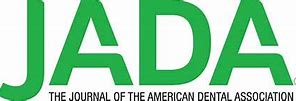As COVID cases surge across the country, California dental employers must continue to follow Cal/OSHA’s…
ADA Survey: Ergonomic Risks in Dentistry
The American Dental Association (ADA) conducted a well-being survey among dentists in 2015 that revealed ergonomics to be a major issue. According to the ADA, two-thirds of responding dentists reported neck pain and low back pain, with half of them describing the pain to be moderate or severe.
Ergonomics Risks in Dentistry
Dentistry by its nature involves repetitive motions, awkward postures, and sustained muscle contractions, all of which are risk factors for musculoskeletal disorders (MSDs). Generally, it is a combination of these risk factors that contributes to MSDs.
The physical demands involve awkward static postures of the back, neck, shoulders, and arms, and extremely fine motor control and exertion of the hands and fingers, often maintained for extended periods of time. The biggest risk factor for dentists is poor posturing of the back, neck, and shoulders sustained over an extended period, while for dental hygienists it is performing the same precise hand movements repeated continuously throughout the day.
Some of the mental constraints unique to the practice of dentistry include time pressures of fixed patient schedules and coping with patient anxieties. Combined with poor visual acuity and lighting of the oral cavity, the potential ergonomic hazards in the field of dentistry pose a risk of injury if not controlled properly.
Regulatory Requirements
At the federal level, there are no specific regulations addressing ergonomic hazards in the workplace. However, federal OSHA has cited employers for ergonomic hazard violations under the General Duty Clause, which requires employers to keep their workplaces free of serious recognized hazards. This clause is generally cited when no specific OSHA standard exists.
In California, Cal/OSHA requires an employer to implement a formal ergonomic program that addresses repetitive motions risk factors when at least two employees, performing the same job or work activity, develop repetitive motion injuries. The program should include a worksite evaluation, control of exposures that caused the injuries, and training employees.
Proper Ergonomic Design
Proper ergonomic design helps to improve personnel safety and well-being while maximizing efficiency and productivity in the work environment, which is accomplished by designing tasks, work spaces, controls and displays, tools, lighting, and equipment to fit employees’ physical capabilities and limitations.
It is recommended that all dental offices have a formal ergonomics program in place outlining the office ergonomic policies and procedures. As part of the ergonomic program, employers should train dental personnel on the occupational risk factors that can cause MSDs, as well as strategies to minimize extreme joint position and reduce the use of excess force and highly repetitive movements. Early reporting of symptoms should also be encouraged, since early intervention leads to better medical management at less cost and inconvenience.
For our OSHA Review Subscribers… a template written ergonomic plan can be downloaded from our website.
Since 1992, OSHA Review, Inc. has provided dental professionals with comprehensive programs to support regulatory compliance and infection control. We are a registered continuing education provider in the state of California, specializing in Dental Practice Act, infection control, and OSHA training.



